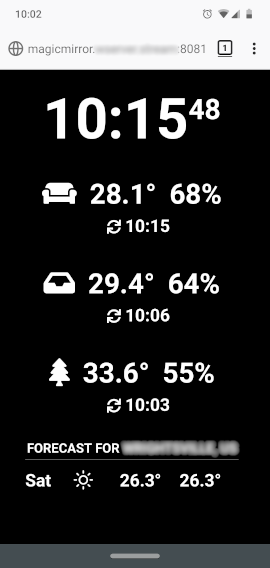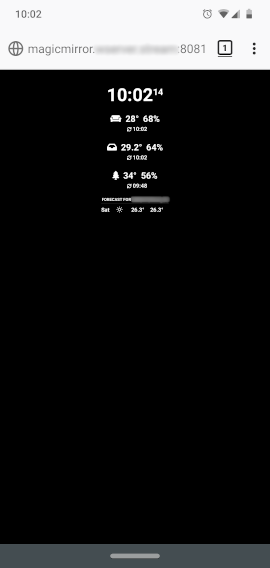Read the statement by Michael Teeuw here.
CSS for small fullscreen display
-
@cweinhofer you could also try zoom in on the browser, not sure how to do that
on phone/tablet -
@cweinhofer had to enable zoom in the settings/accessibility setting on chromium. slider there to adjust
-
@sdetweil Thanks for the suggestions. The browser options didn’t seem to work for me, but the viewport CSS did. I couldn’t use your file as-is, but was able to borrow from it to add to my custom CSS.
I ended up adding custom sizes for each element – one of the things I was trying to avoid – but it was the only workable solution I could come up with for now.
I was wondering if the CSS
transform: scale(x);might be a solution for scaling the whole layout, but I’m not sure what element to apply it to. Maybe someone who is more knowledgeable can comment.I know that the body margin, height, and width all need to be adjusted, not just the font size, so it would need to accommodate for that.
Here’s my custom CSS if anyone’s interested:
body { margin: 6vw; height: calc(100% - 12vw); width: calc(100% - 12vw); font-size: 9vw; line-height: 9vw; } .small { font-size: 9vw; line-height: 9.5vw; } .medium { font-size: 6vw; line-height: 6.5vw; } .large { font-size: 36vw; line-height: 36vw; } header { font-size: 6vw; line-height: 6vw; padding-bottom: 2vw; margin-bottom: 3vw; } .module { margin-bottom: 12vw; } -
What you mean is called responsive web design. for example, you could use the tablet in portrait or landscape format and thus adjust the position of the modules.You have to change the index.html for this with the meta name viewport, but with an update the index.html will probably be overwritten.
-
@cweinhofer I am glad it helped


